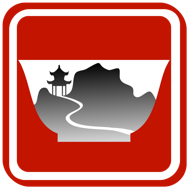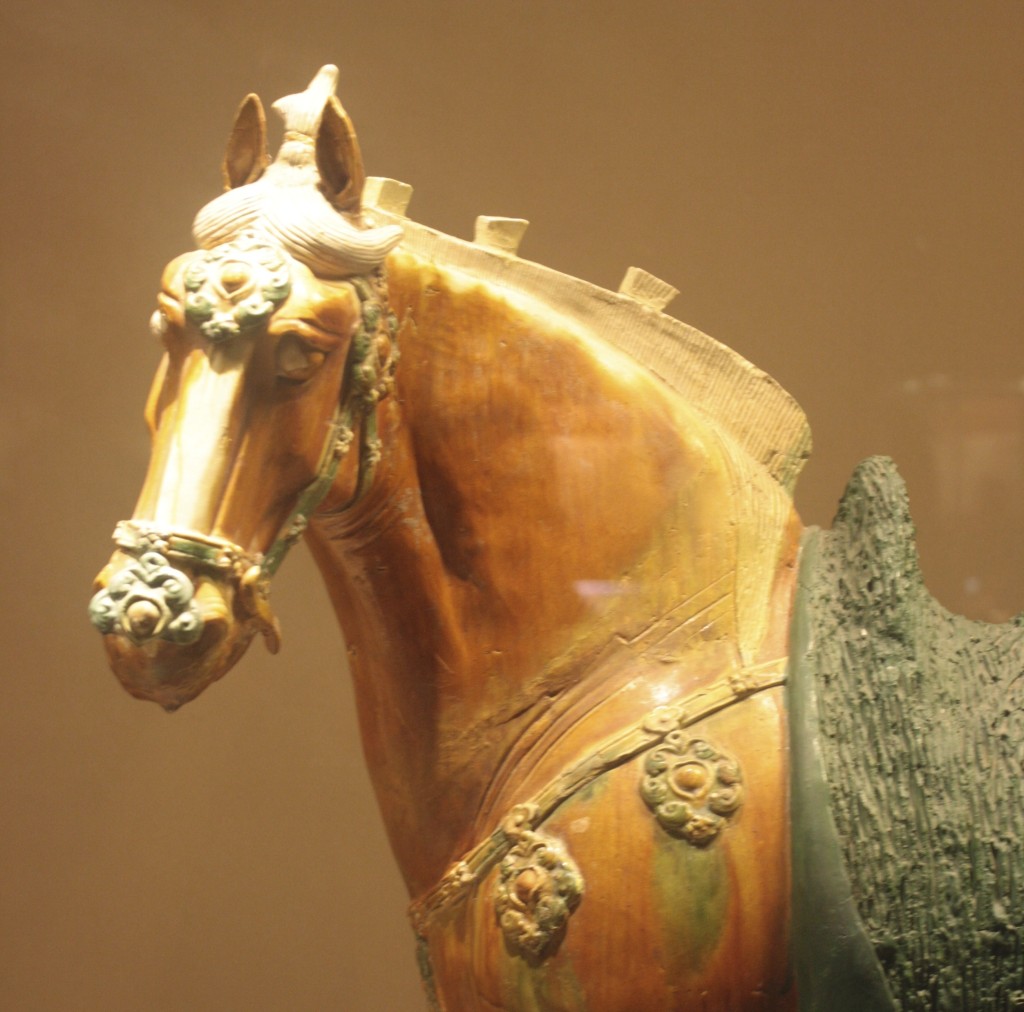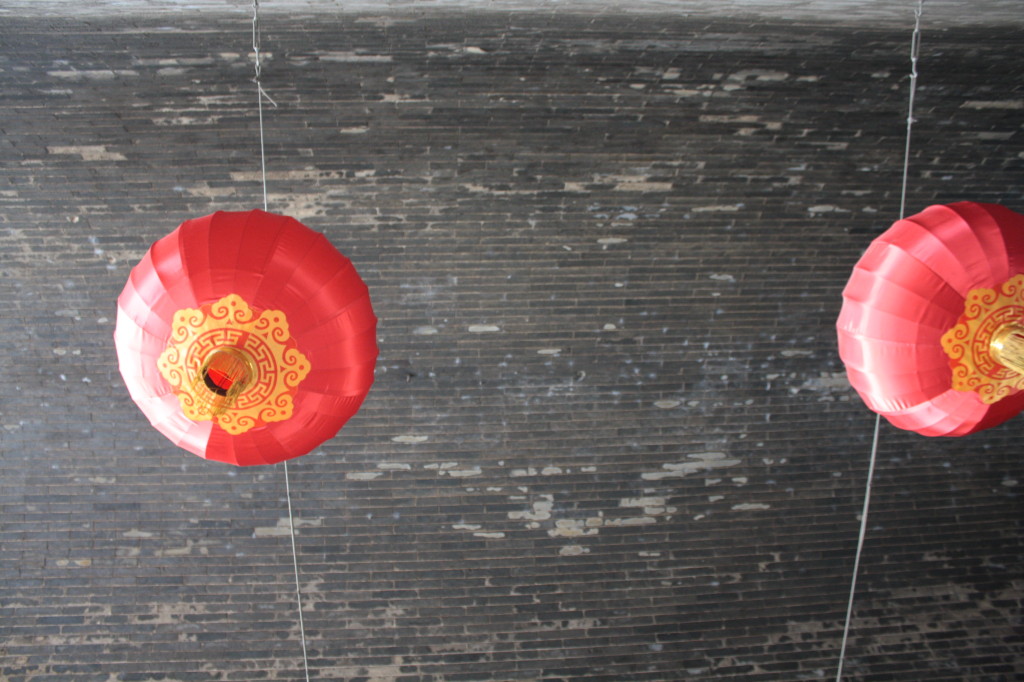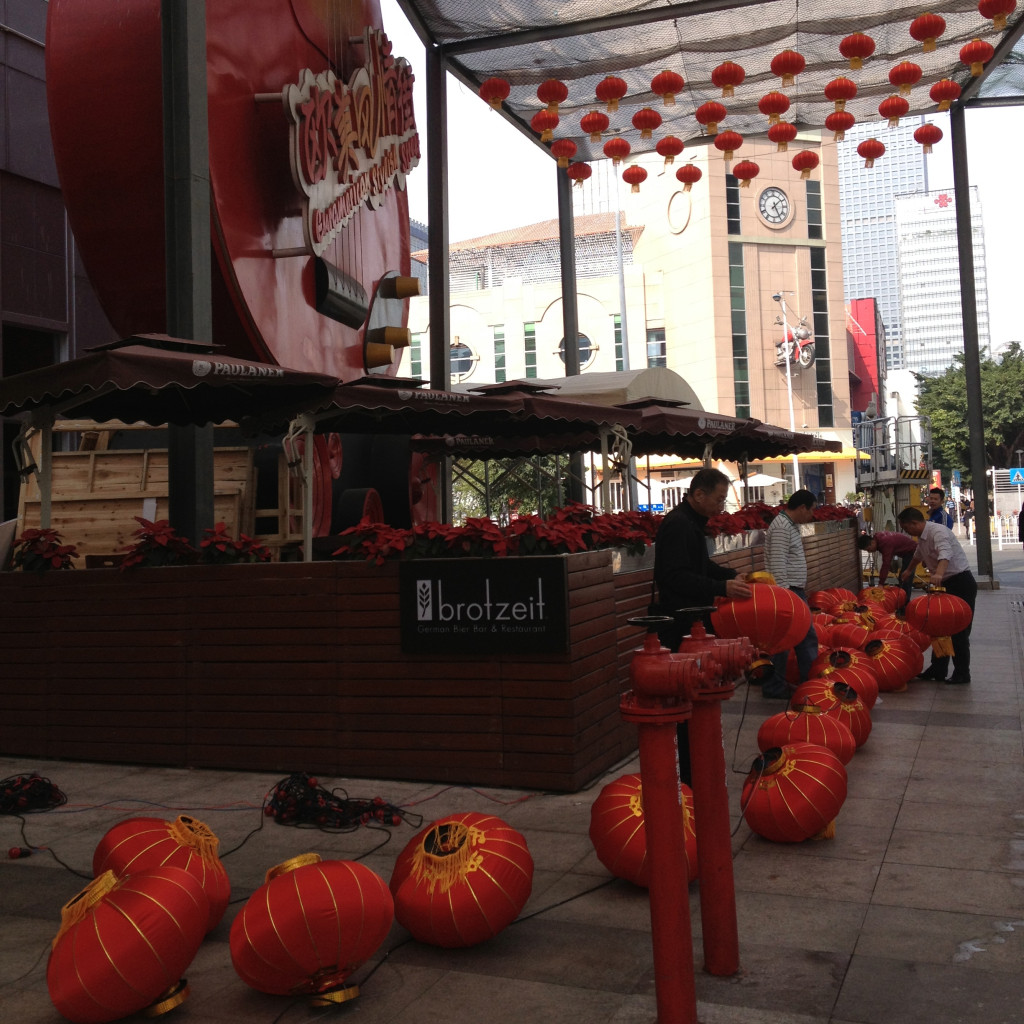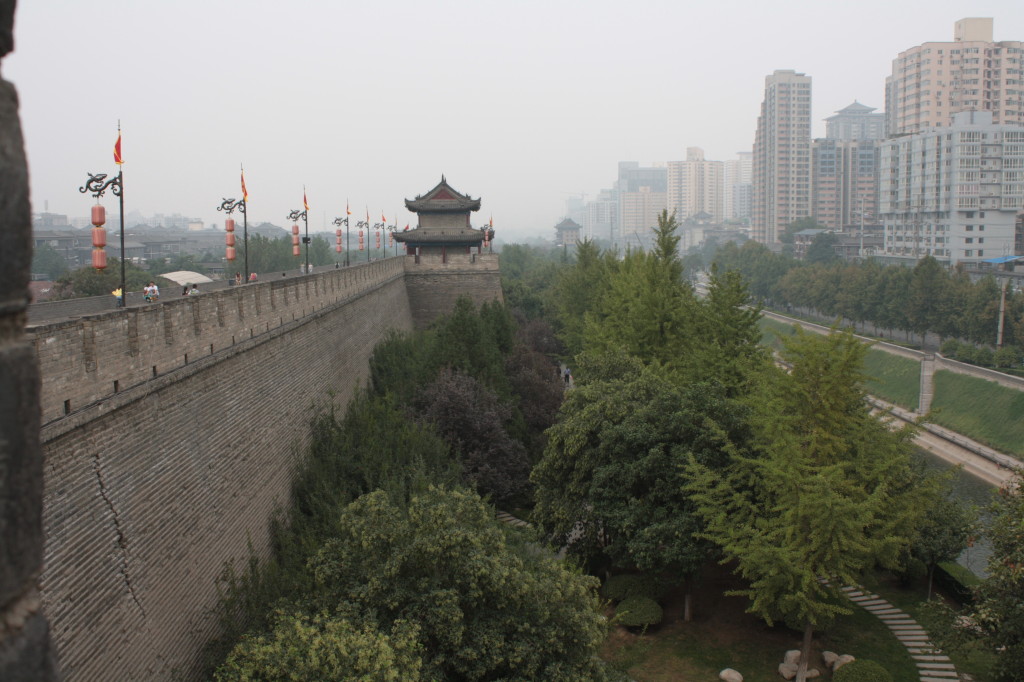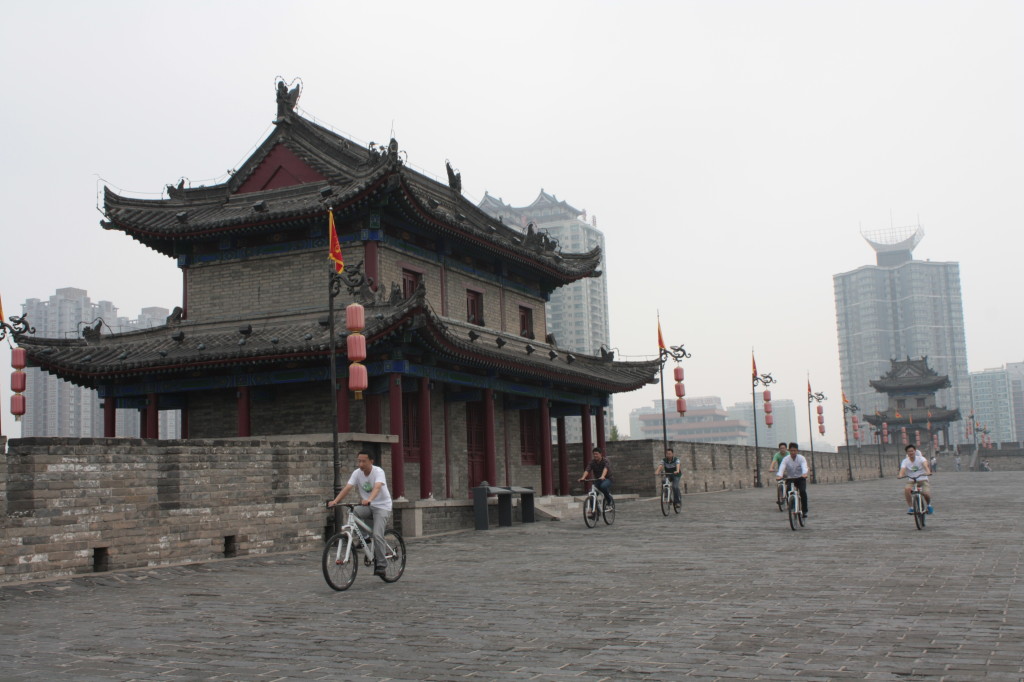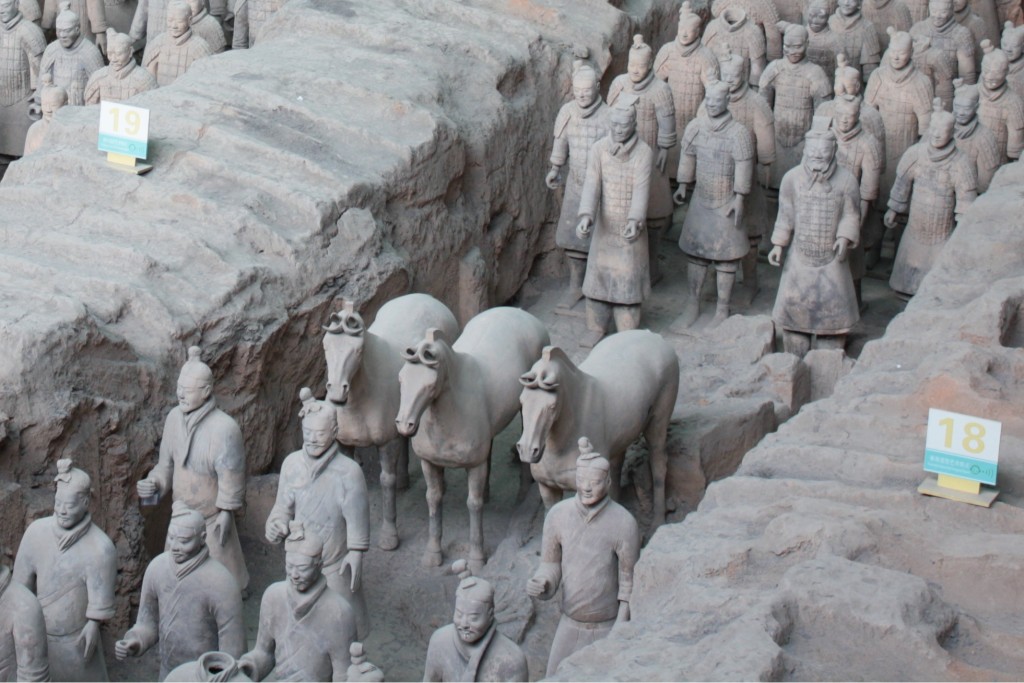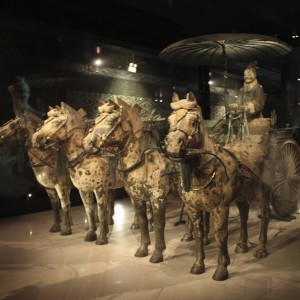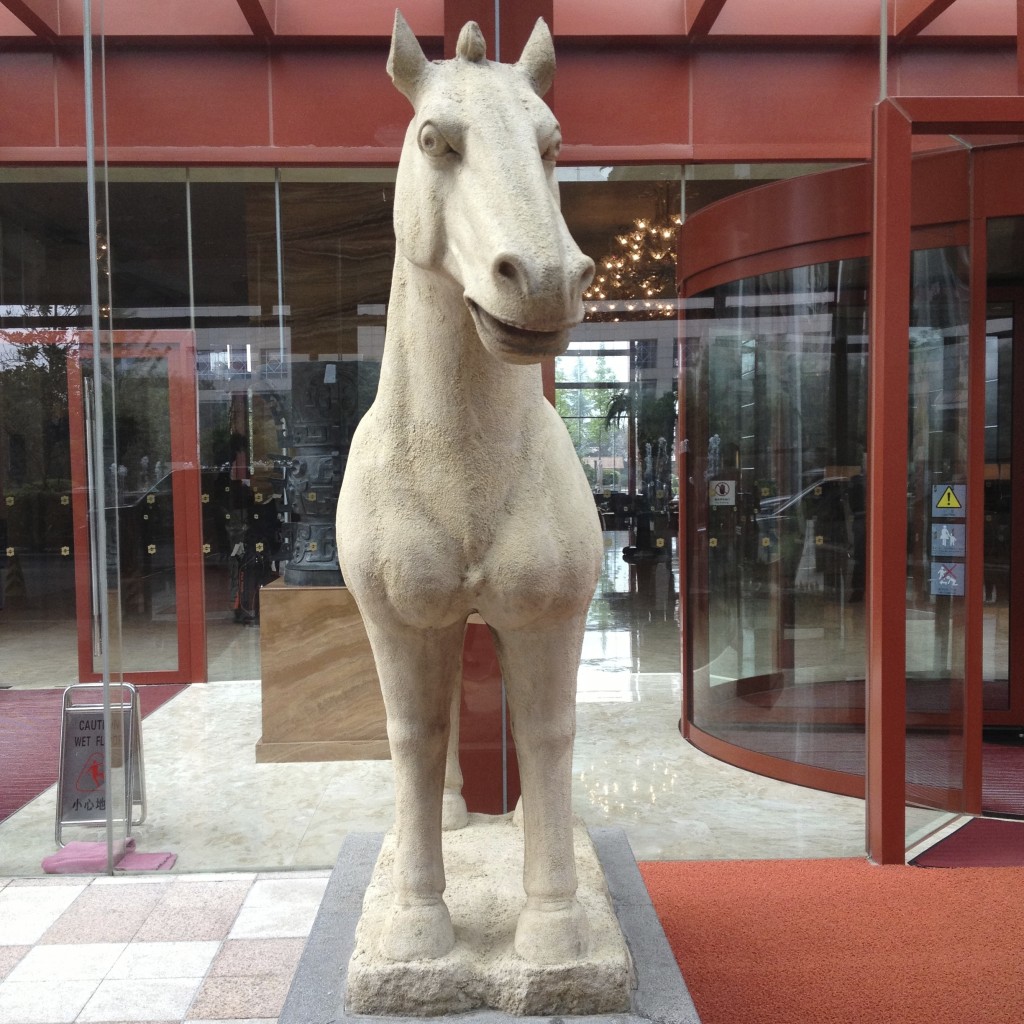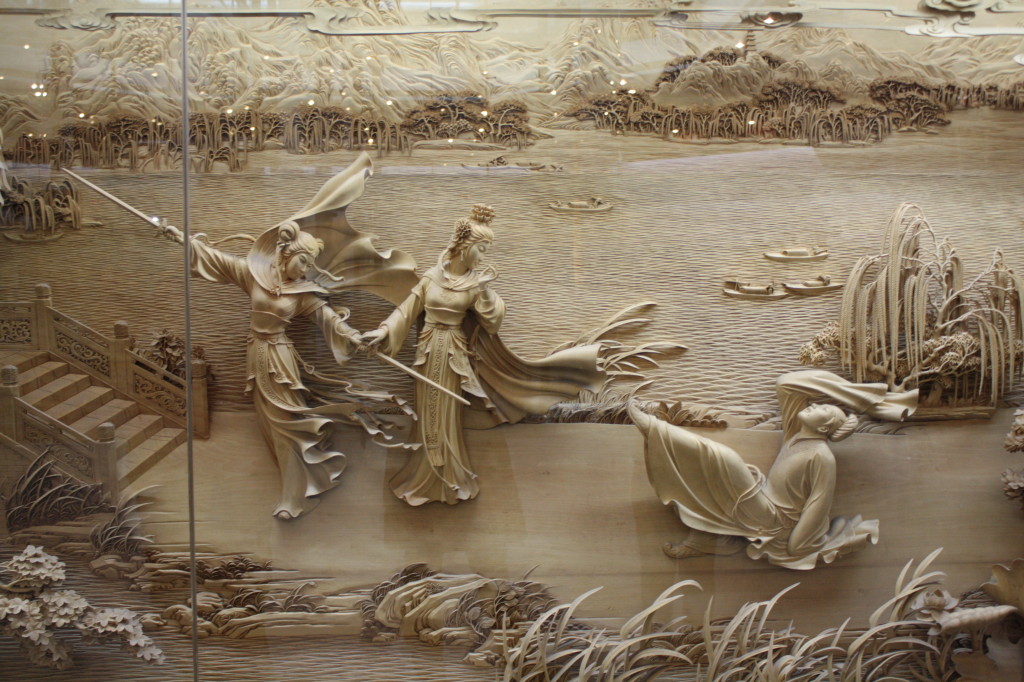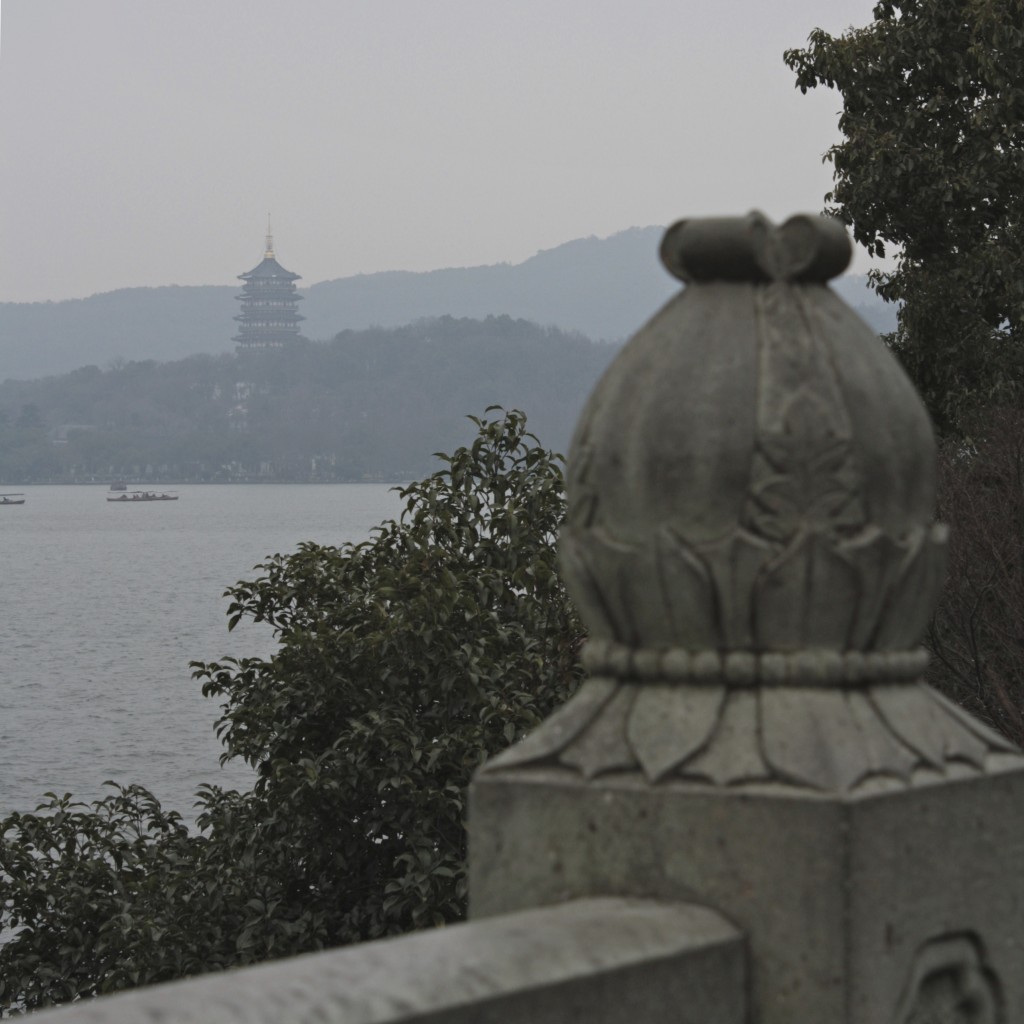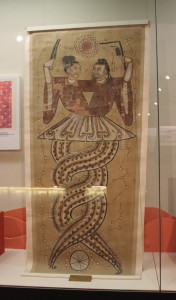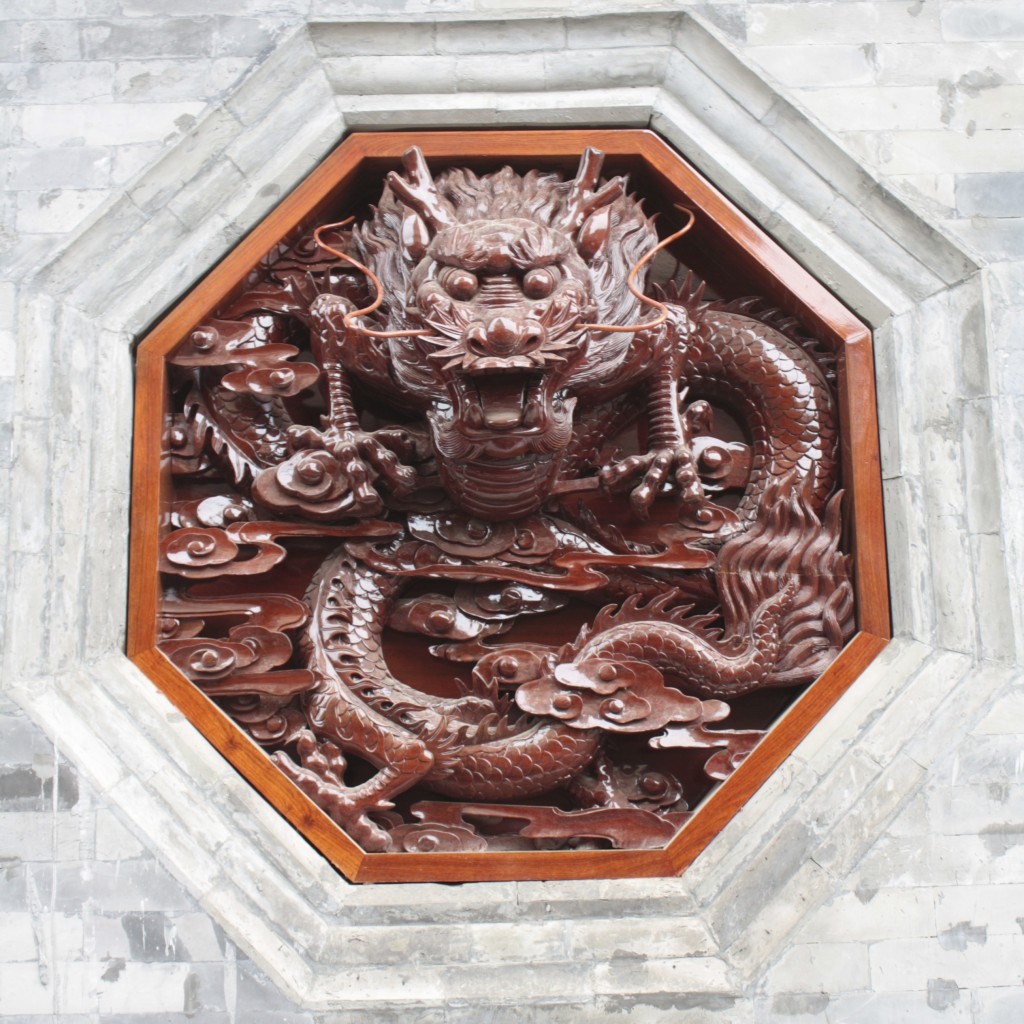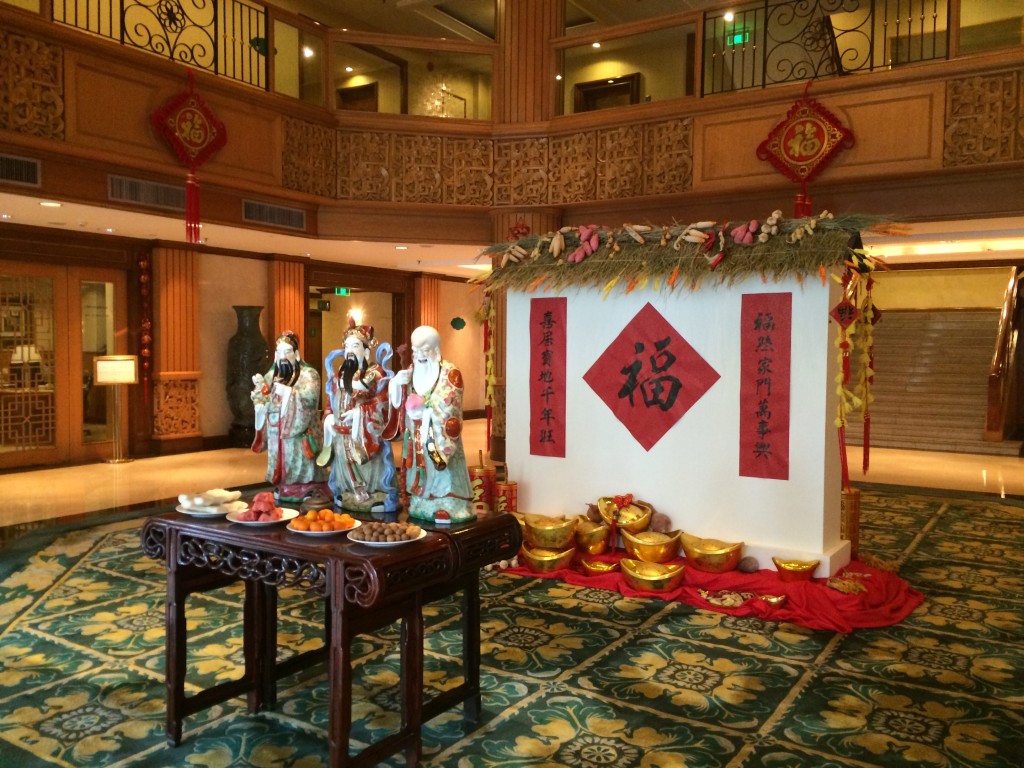
New Year’s altar, with red paper wishes for blessings, gold ingots, Taoist immortals
and fruits of prosperity
Last evening was the chuxi (除夕), the Eve of Chinese New Year. Families gather from all corners of the country to feast and see the old year out together. Chances are there will be a bit of chaos too, made up of a crescendo of fireworks, kids begging indiscriminately for a hong bao filled with money, and the ever present CCTV New Year’s Eve Gala, probably watched by at least 700 million viewers.
Many foods will be present at the table, filled with meaning and wishes for the new year. In the south, sticky rice cake and sweet tangerines are popular. The name of the rice cake (黏糕 nian gao) sounds like 年高 nian gao, each year higher and higher aspirations. Juzi tangerines are found on topiaries decorated with ribbon and red envelopes, common around Guangdong province as the name sounds like luck (吉) in the Teochow dialect of the eastern part of the province.
Northerners are partial to dumplings, and make them by the dozens in a small slipper shape, which looks like the ancient silver currency, the sycee or ingot, another popular symbolic decoration. These get gobbled up at midnight with wishes for a prosperous new year. They might also serve long, uncut noodles, symbolizing longevity, the 寿面 shou mian a common feature at any birthday feast.
Xi’an has some of the longest, widest and tastiest noodles of all. Ring in the New year of the Horse with China Tea Leaves Xian, and stay with us to hear more stories surrounding Chinese New Year and how China Tea Leaves finds themselves this Spring Festival in Hangzhou, home of Bai Suzhen, ancient temples, secluded pavilions, and the heavenly West Lake.
